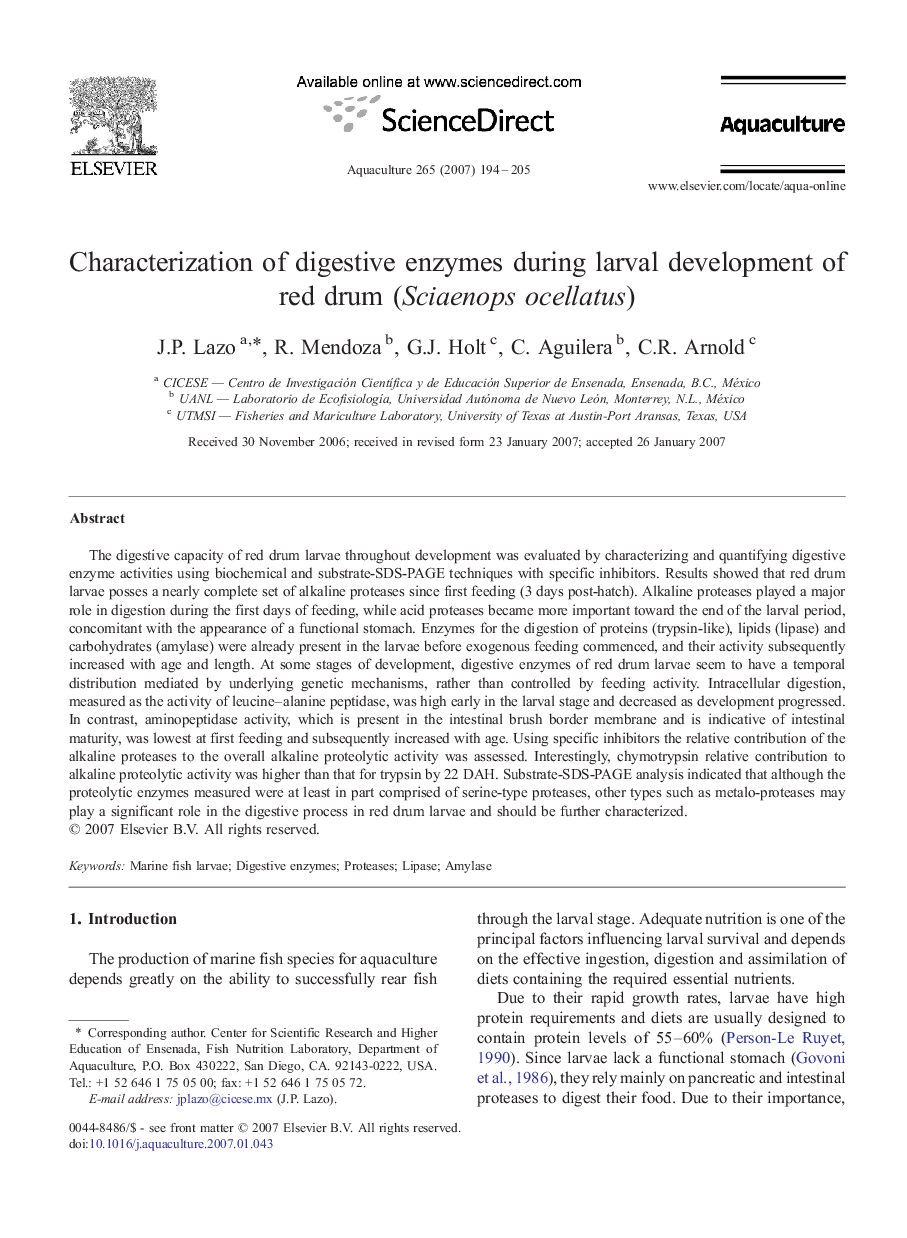| Article ID | Journal | Published Year | Pages | File Type |
|---|---|---|---|---|
| 2425626 | Aquaculture | 2007 | 12 Pages |
The digestive capacity of red drum larvae throughout development was evaluated by characterizing and quantifying digestive enzyme activities using biochemical and substrate-SDS-PAGE techniques with specific inhibitors. Results showed that red drum larvae posses a nearly complete set of alkaline proteases since first feeding (3 days post-hatch). Alkaline proteases played a major role in digestion during the first days of feeding, while acid proteases became more important toward the end of the larval period, concomitant with the appearance of a functional stomach. Enzymes for the digestion of proteins (trypsin-like), lipids (lipase) and carbohydrates (amylase) were already present in the larvae before exogenous feeding commenced, and their activity subsequently increased with age and length. At some stages of development, digestive enzymes of red drum larvae seem to have a temporal distribution mediated by underlying genetic mechanisms, rather than controlled by feeding activity. Intracellular digestion, measured as the activity of leucine–alanine peptidase, was high early in the larval stage and decreased as development progressed. In contrast, aminopeptidase activity, which is present in the intestinal brush border membrane and is indicative of intestinal maturity, was lowest at first feeding and subsequently increased with age. Using specific inhibitors the relative contribution of the alkaline proteases to the overall alkaline proteolytic activity was assessed. Interestingly, chymotrypsin relative contribution to alkaline proteolytic activity was higher than that for trypsin by 22 DAH. Substrate-SDS-PAGE analysis indicated that although the proteolytic enzymes measured were at least in part comprised of serine-type proteases, other types such as metalo-proteases may play a significant role in the digestive process in red drum larvae and should be further characterized.
